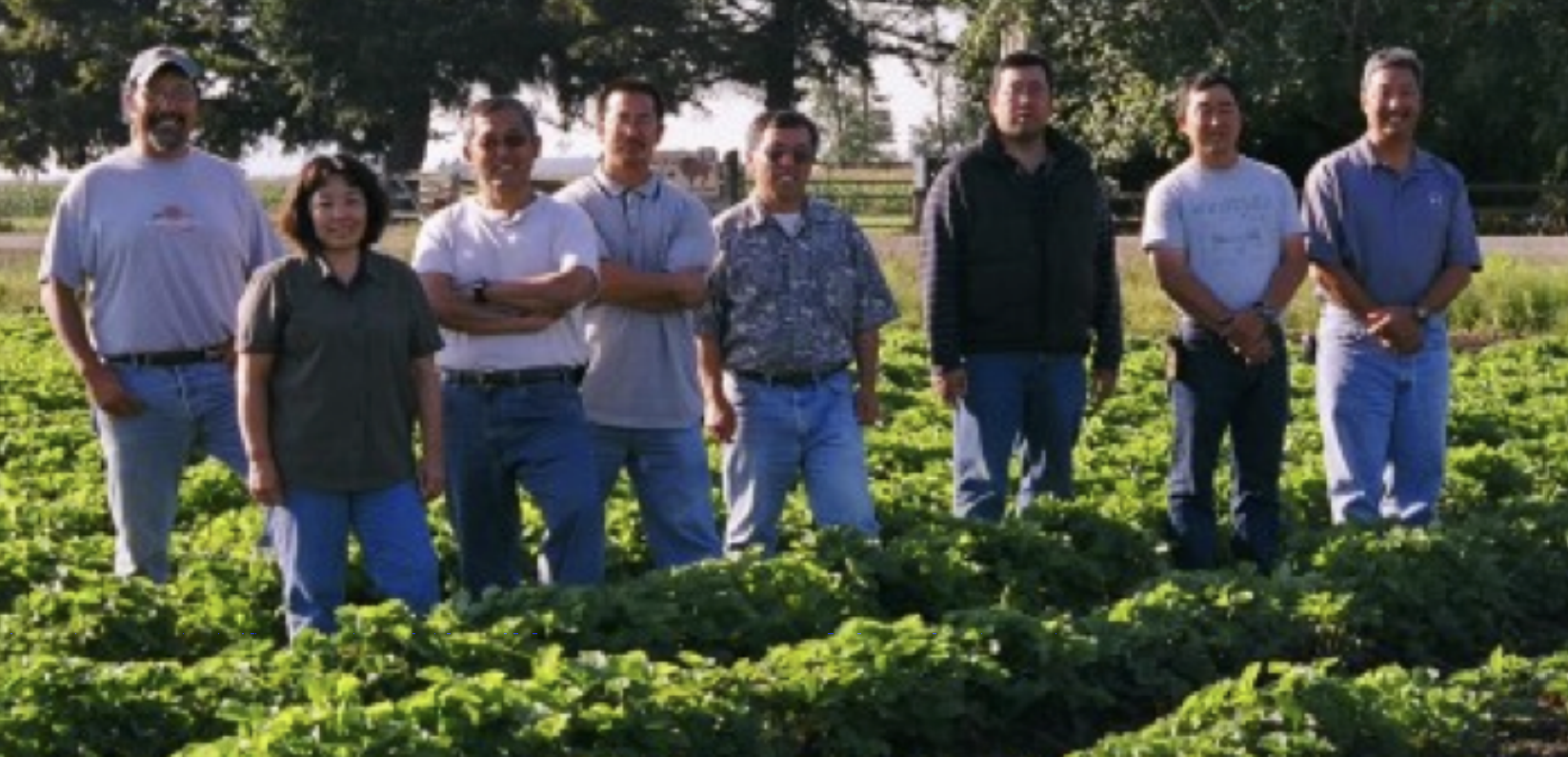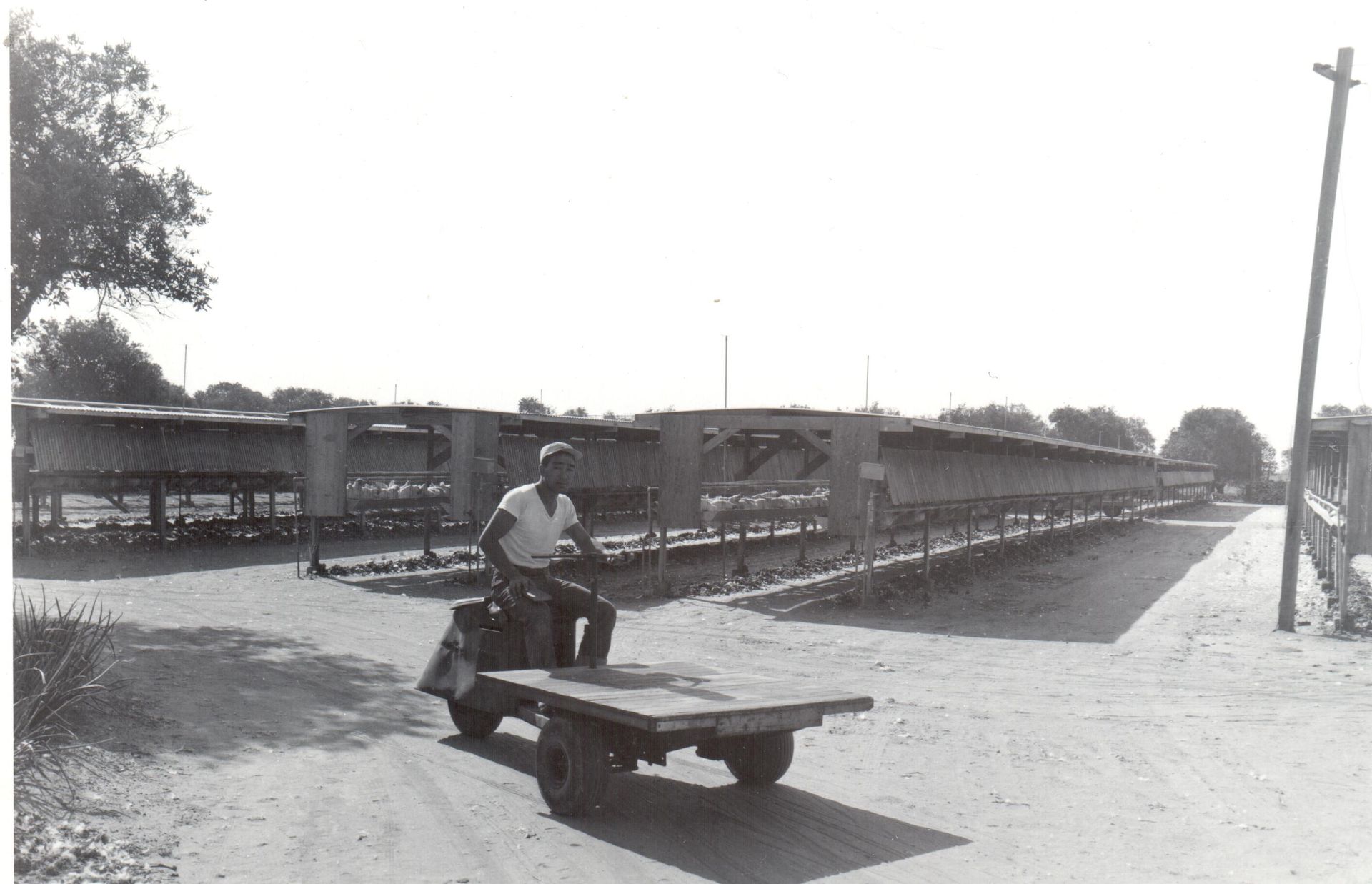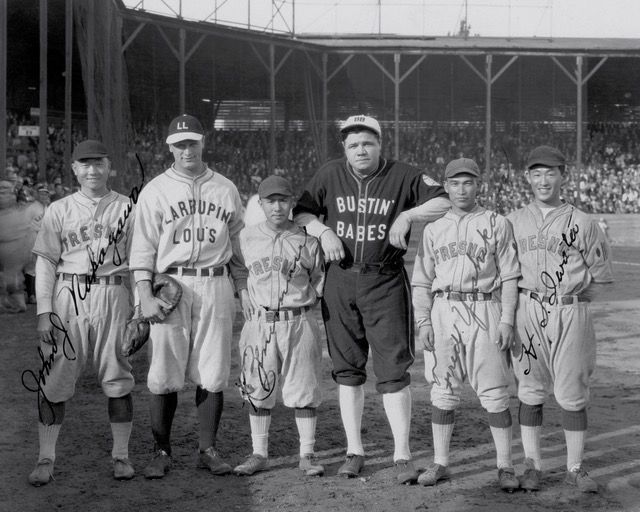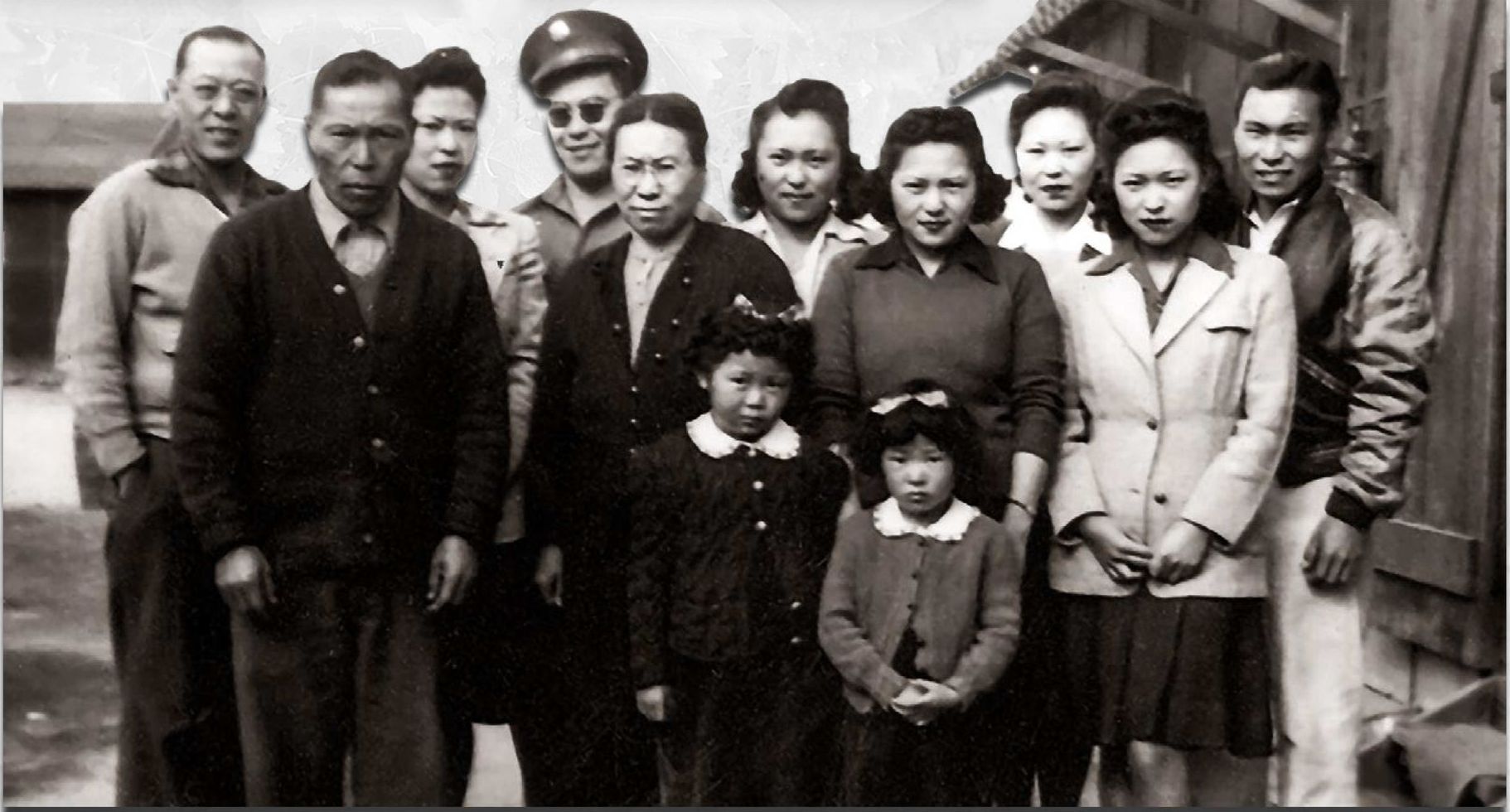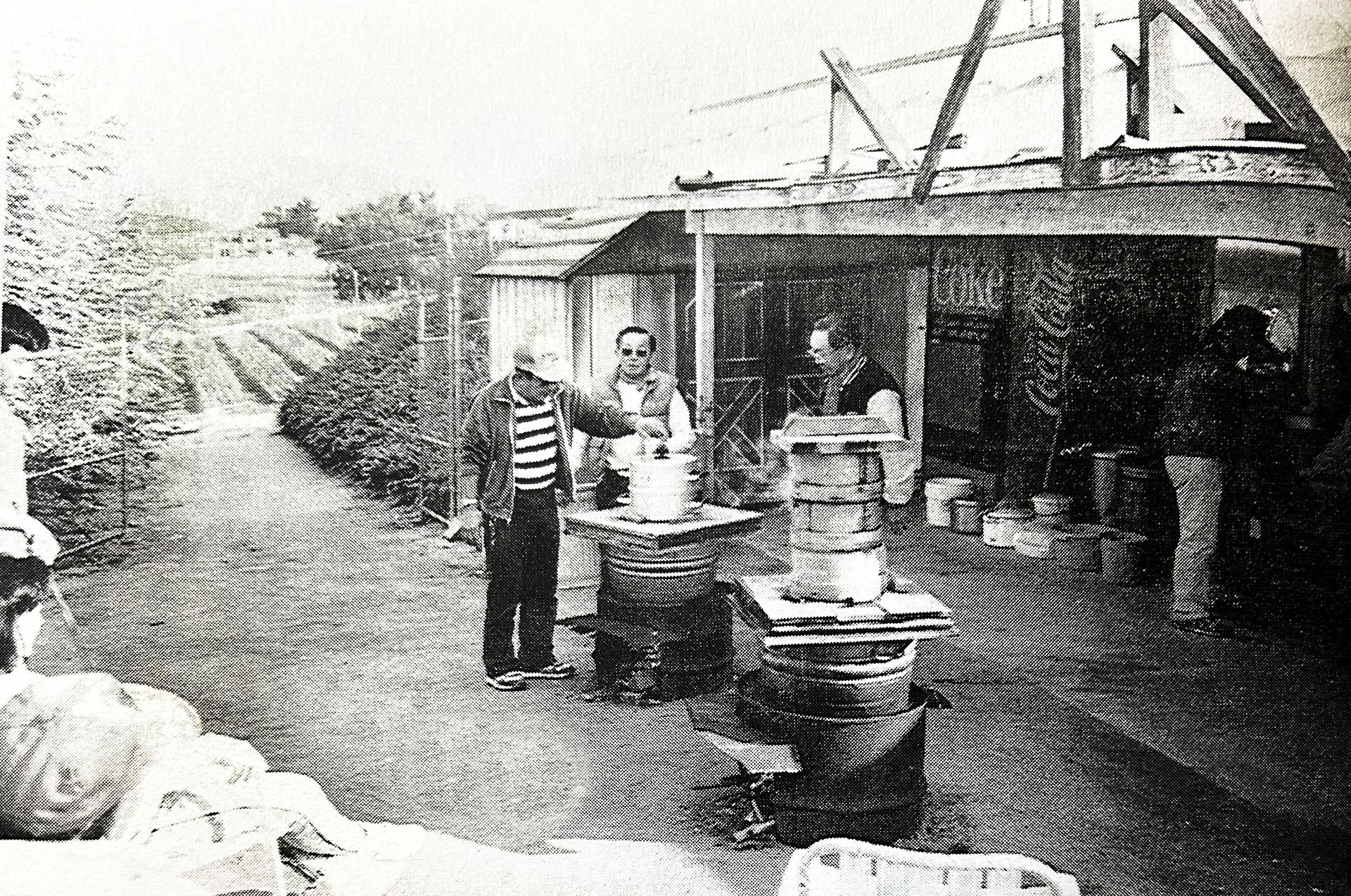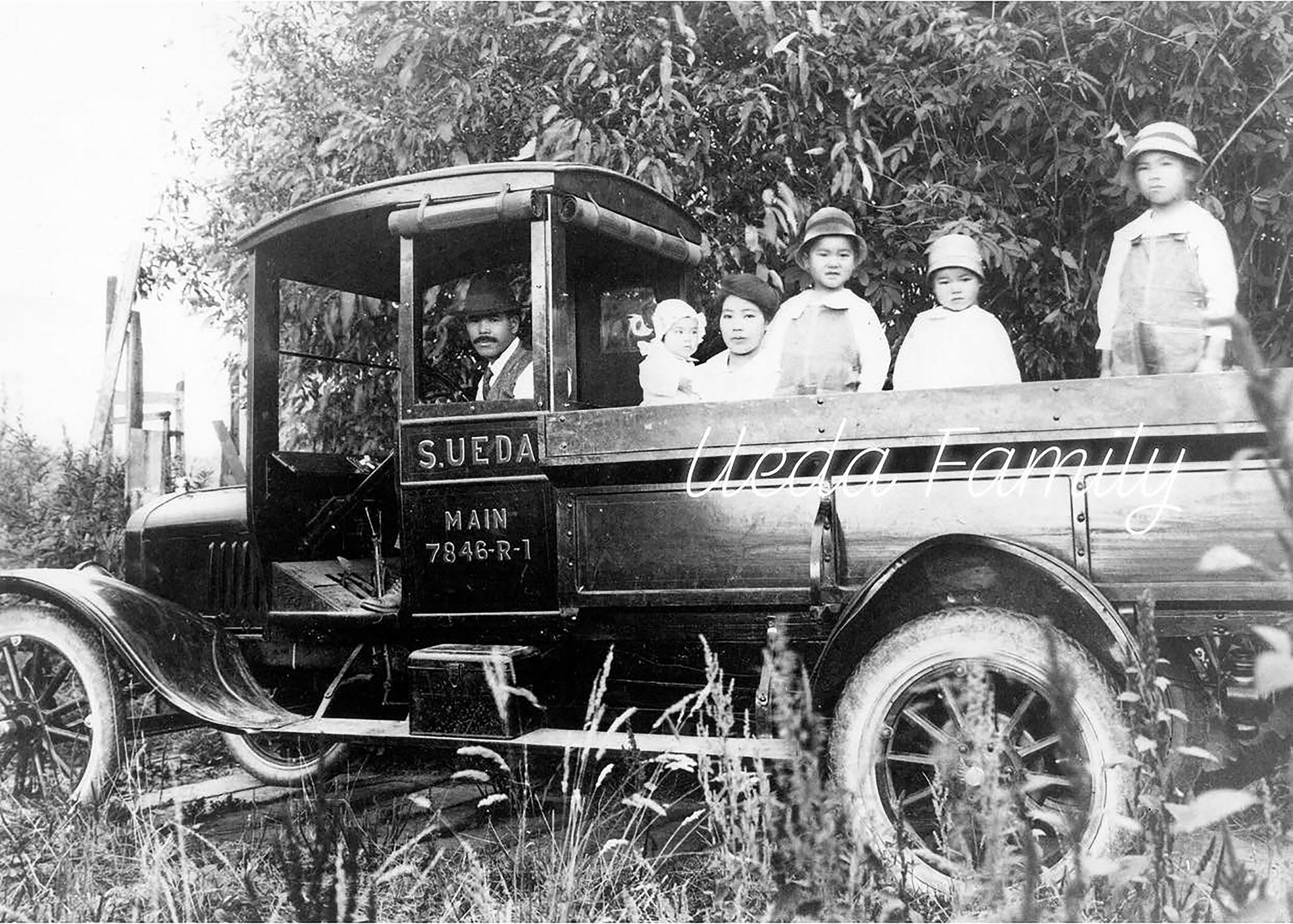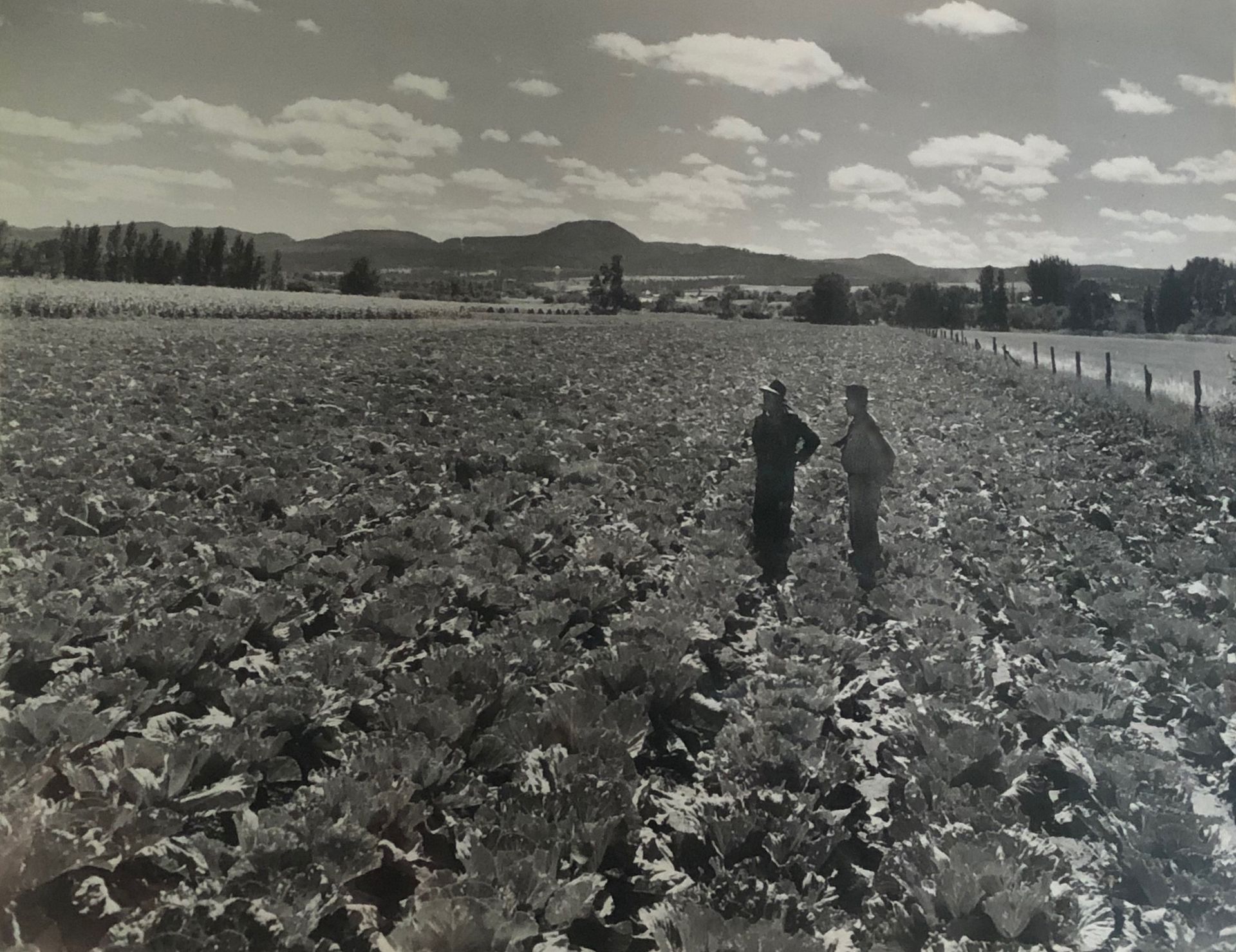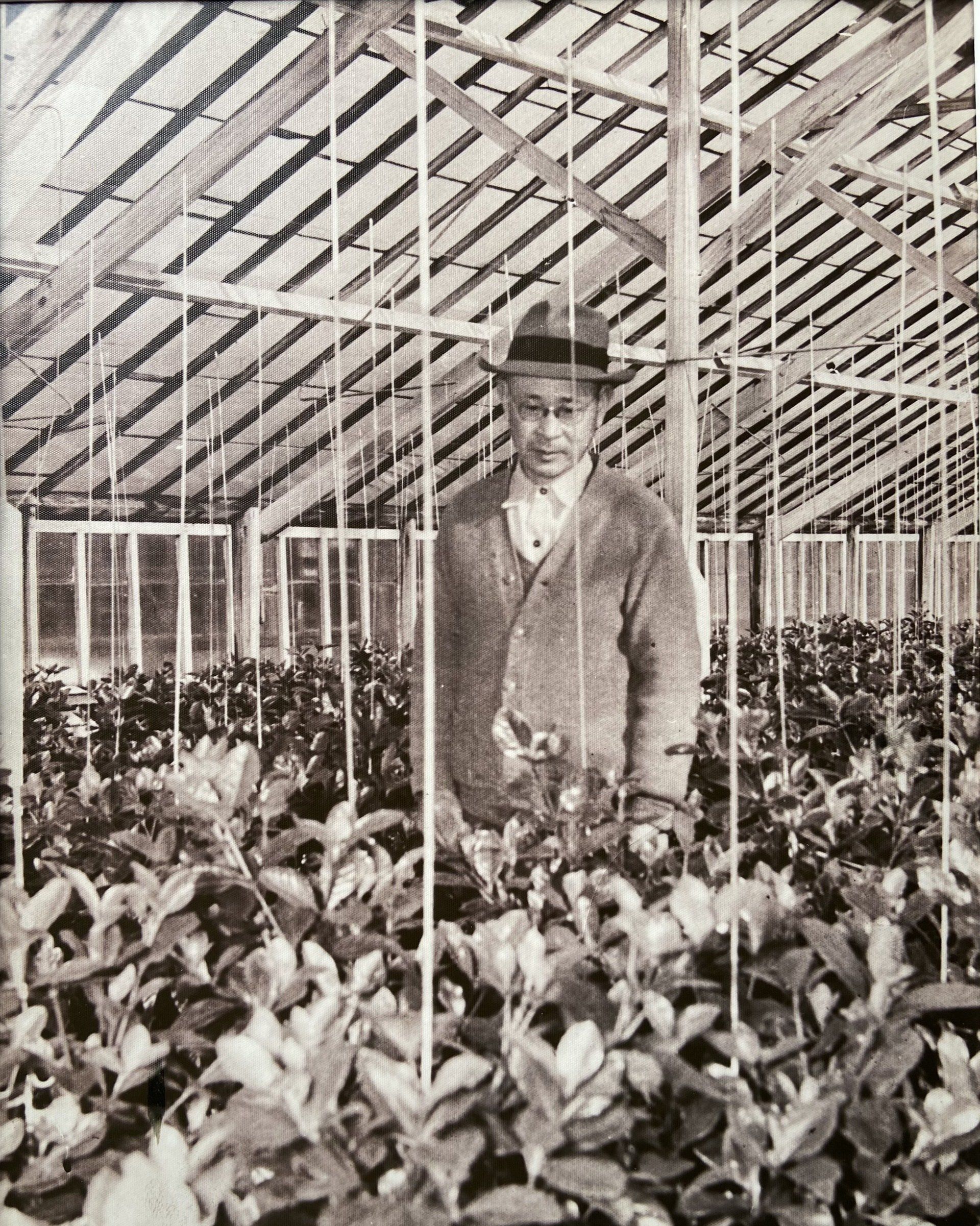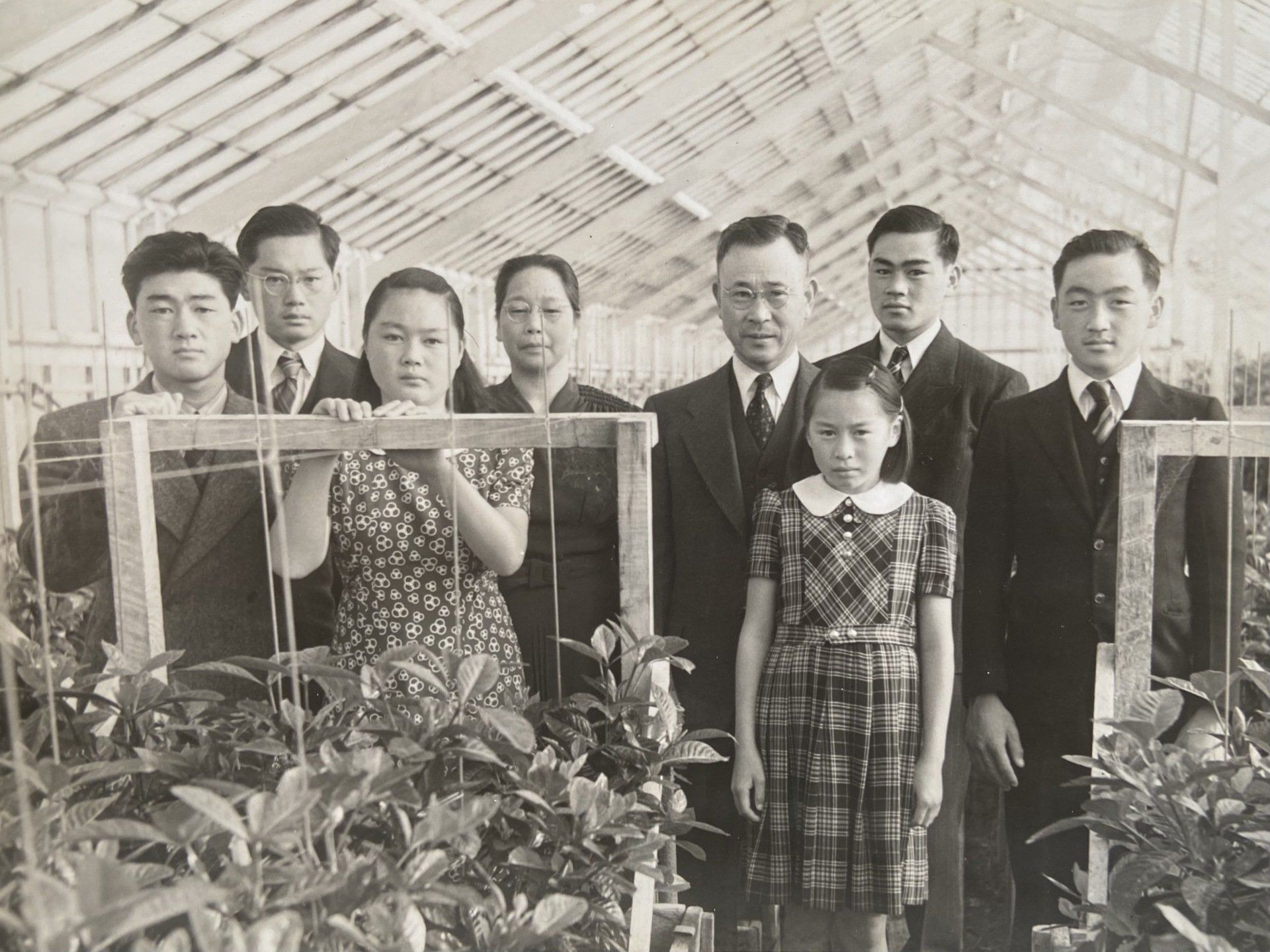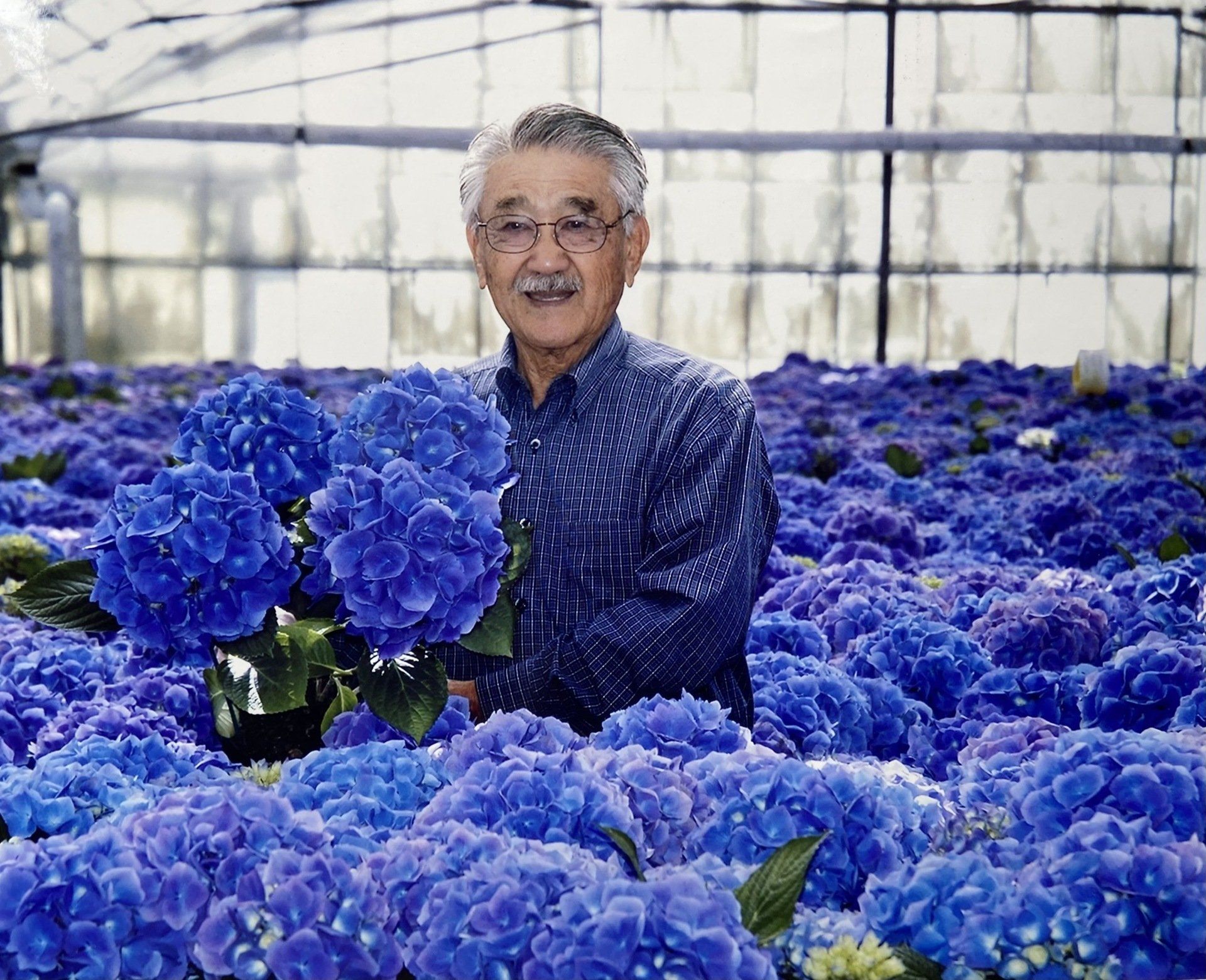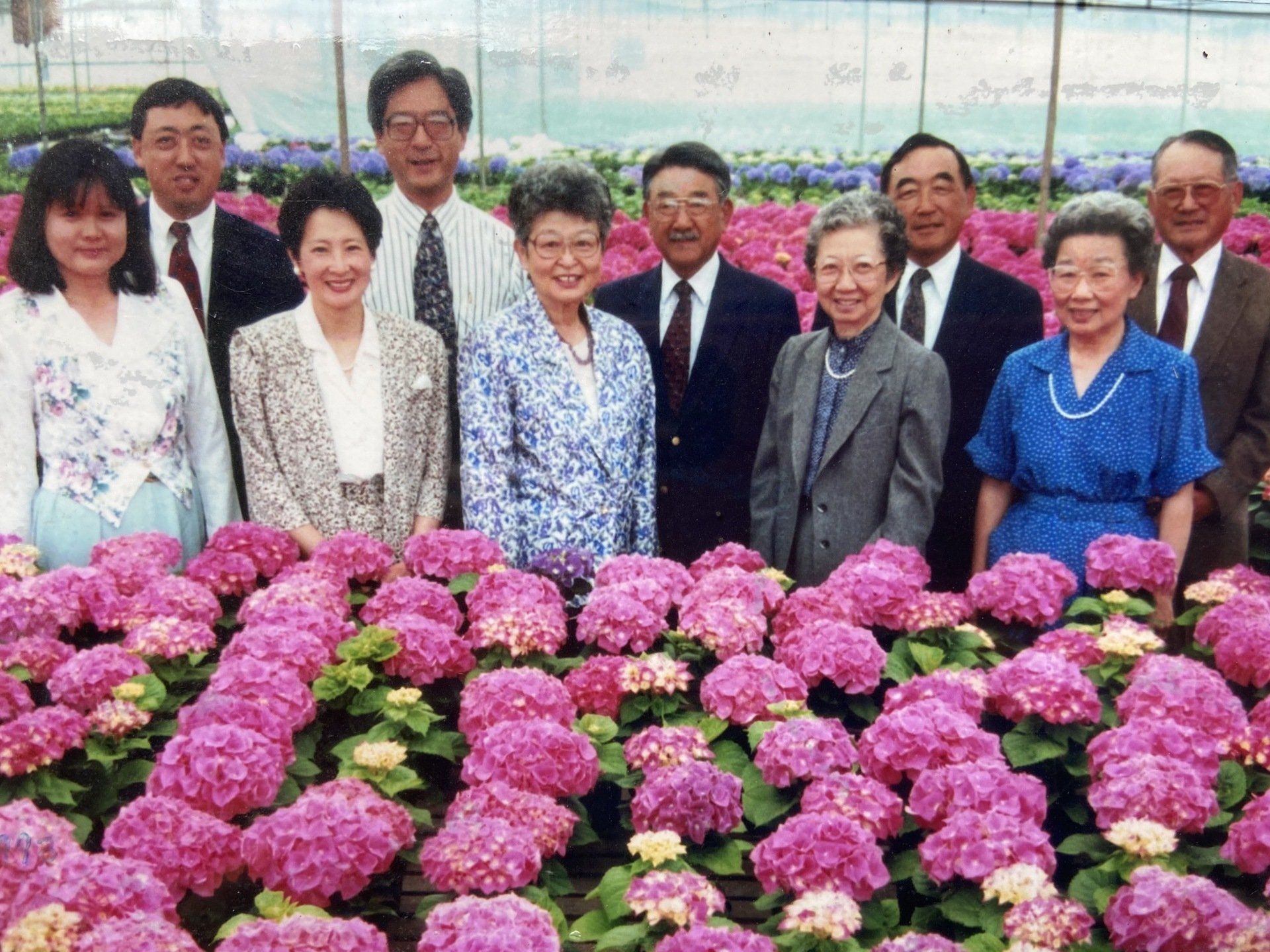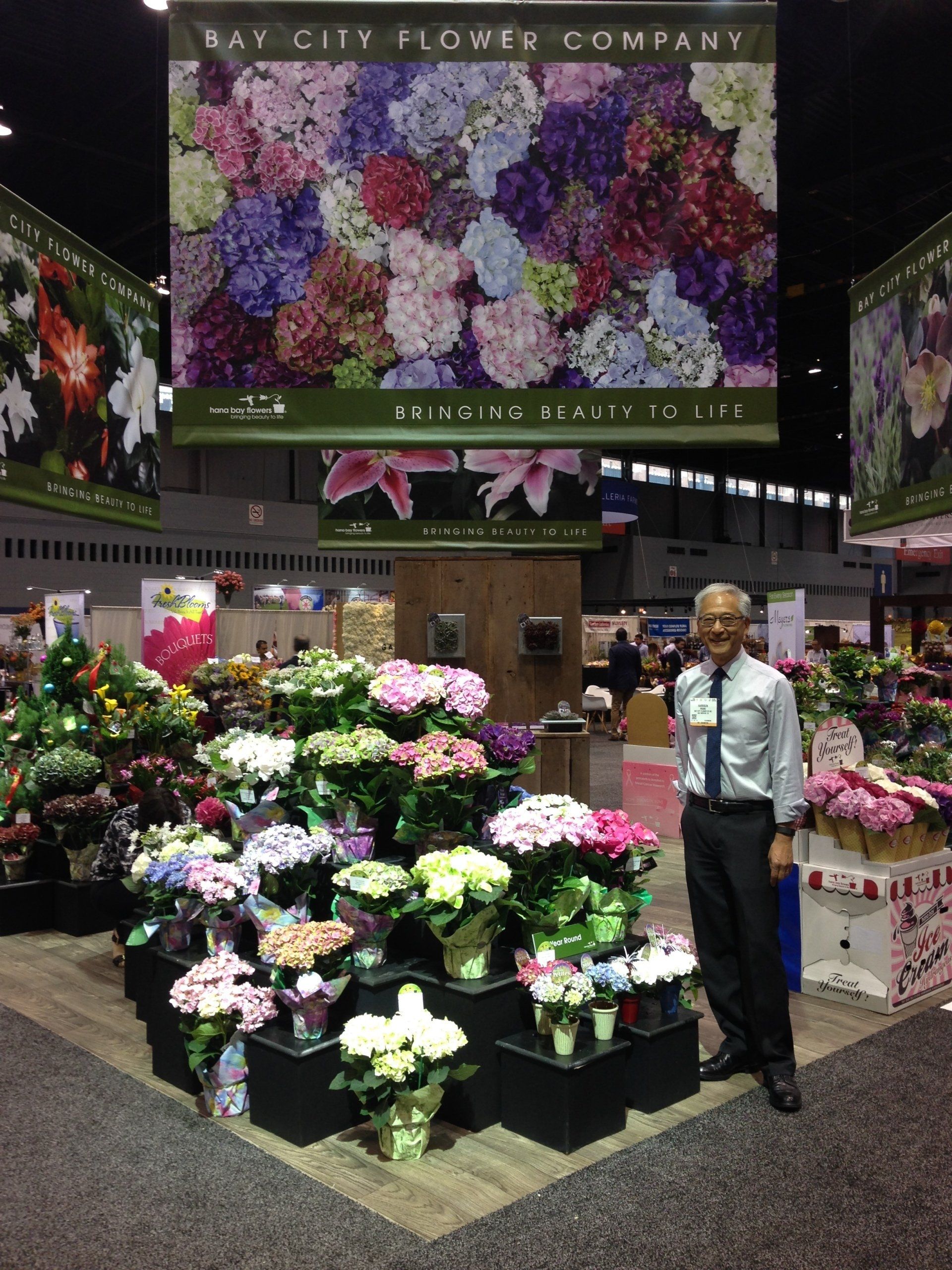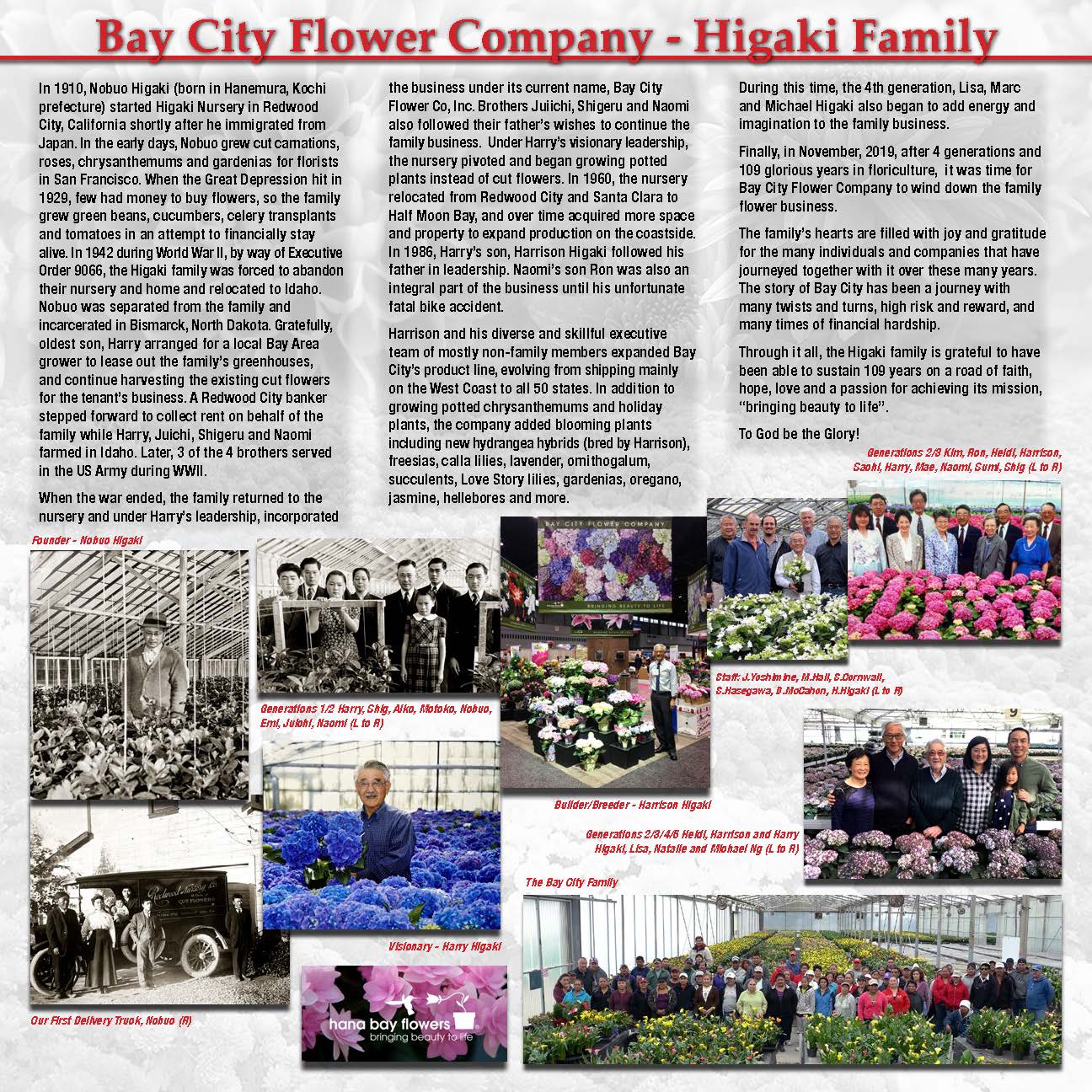Bay City Flower Company - Higaki Family
In 1910, Nobuo Higaki(born in Hanemura, Kochi prefecture) started Higaki Nursery in Redwood City, California shortly after he immigrated from Japan. In the early days, Nobuo grew cut carnations, roses, chrysanthemums and gardenias for florists in San Francisco. When the Great Depression hit in 1929, few had money to buy flowers, so the family grew green beans, cucumbers, celery transplants and tomatoes in an attempt to financially stay alive. In 1942 during World War II, by way of Executive Order 9066, the Higaki family was forced to abandon their nursery and home and relocated to Idaho. Nobuo was separated from the family and incarcerated in Bismarck, North Dakota. Gratefully, oldest son, Harry arranged for a local Bay Area grower to lease out the family’s greenhouses, and continue harvesting the existing cut flowers for the tenant's business. A Redwood City banker stepped forward to collect rent on behalf of the family while Harry, Juichi, Shigeru & Naomi farmed in Idaho. Later, 3 of the 4 brothers served in the US Army during WWII.
When the war ended, the family returned to the nursery and under Harry's leadership, incorporated the business under its current name, Bay City Flower Co, Inc. Brothers Juiichi, Shigeru & Naomi also followed their father's wishes to continue the family business. Under Harry’s visionary leadership, the nursery pivoted and began growing potted plants instead of cut flowers. In 1960, the nursery relocated from Redwood City and Santa Clara to Half Moon Bay, and over time acquired more space and property to expand production on the coastside. In 1986, Harry’s son, Harrison Higaki followed his father in leadership. Naomi's son Ron was also an integral part of the business until his unfortunate fatal bike accident.
Harrison and his diverse and skillful executive team of mostly non-family members expanded Bay City's product line, evolving from shipping mainly on the West Coast to all 50 states. In addition to growing potted chrysanthemums & holiday plants, the company added blooming plants including new hydrangea hybrids (bred by Harrison), freesias, calla lilies, lavender, ornithogalum, succulents, Love Story lilies, gardenias, oregano, jasmine, hellebores & more.
During this time, the 4th generation, Lisa, Marc & Michael Higaki also began to add energy & imagination to the family business.
Finally, in November, 2019, after 4 generations & 109 glorious years in floriculture, it was time for Bay City Flower Company to wind down the family flower business. The family's hearts are filled with joy & gratitude for the many individuals and companies that have journeyed together with it over these many years.
The story of Bay City has been a journey with many twists and turns, high risk & reward, and many times of financial hardship. Through it all, the Higaki Family is grateful to have been able to sustain 109 years on a road of faith, hope, love and a passion for achieving its mission, "bringing beauty to life".
To God be the Glory!
Founder - Nobuo Higaki
Our First Delivery Truck, Nobuo(R)
Harry, Shig, Aiko, Motoko, Nobuo, Emi, Juichi, Naomi(L to R)
Visionary - Harry Higaki
Kim, Ron, Heidi, Harrison, Sachi, Harry, Mae, Naomi, Sumi, Shig (L to R)
Builder/Breeder - Harrison Higaki
J.Yoshimine, M.Hall, S.Cornwall, S.Hasegawa, D.McCahon, H.Higaki (L to R)
Bay City Family
Heidi, Harrison & Harry Higaki, Lisa, Natalie & Michael Ng (L to R)

